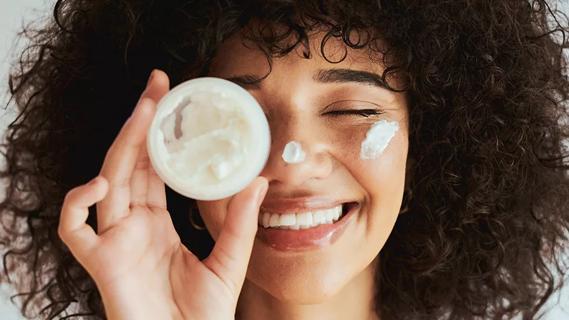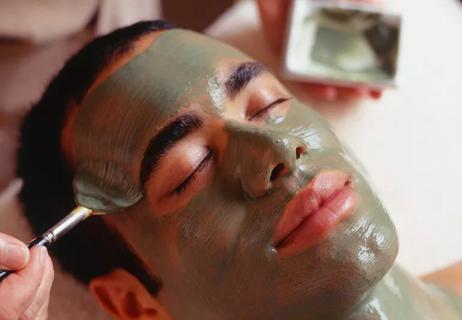Even if you weren’t allergic to an ingredient before, you could develop an allergy over time

A slather of hand lotion here, an application of a new moisturizer there — how much time do you really spend thinking about the products you put on your skin? In many cases, the answer is “not much at all”… until you end up with an itchy, red rash that won’t seem to go away.
Advertisement
Cleveland Clinic is a non-profit academic medical center. Advertising on our site helps support our mission. We do not endorse non-Cleveland Clinic products or services. Policy
Even if you have no known allergies and don’t think of yourself as someone with sensitive skin, you can end up experiencing some seriously unpleasant side effects that seem impossible to shake.
Allergist Sandra Hong, MD, explains why you might suddenly develop an allergic reaction known as contact dermatitis.
It can be hard to tell what substances your skin does and doesn’t like until you’re already experiencing an issue — and even then, it’s not always easy to narrow down which products caused the concern.
Allergic contact dermatitis is an itchy, red rash that develops when your skin comes into contact with a substance (allergen) that your body doesn’t like. Your rash may also be:
Importantly, contact dermatitis doesn’t always appear right away — especially when you’re using a new-to-you product. After you’ve been exposed to an allergen (or, in the case of skin care products, after you’ve applied it to your skin), it can take several days for an itchy rash to develop.
That means that if you tried out a new moisturizer last week and have used it without issue ever since, it could still be at the root of the rash that appeared today.
“The first time you come into contact with a product, it can take a bit of time for it to happen,” Dr. Hong explains. “But as time goes on, each time your skin is in contact with that allergen, the rash will come on even more quickly. It becomes a more frequent and more rapid occurrence.”
Advertisement
Time to take a look at those labels. There is a variety of allergens known to cause contact dermatitis that are frequently found in skin care products.
And remember: Just because a product is labeled “natural” or “organic” doesn’t mean it’s necessarily safe for your skin.
“Many oils, minerals and other ingredients are natural, which you may think means they’re safe,” Dr. Hong says, “but we can easily develop allergies to those types of products.”
When you’re in the midst of an allergic reaction, there are a few things to do, starting with trying to identify the problem products. Think about what products you’ve recently used — even just one application of them.
“From a timing standpoint, you want to ask yourself what new products you’ve recently put on your skin, or what product you use only occasionally,” Dr. Hong advises. “What do you use just every once in a while and not all the time?”
If you can narrow down a culprit, remove that product from your skin care rotation and don’t apply it to your skin again. As for treating the rash itself, you have a few options.
“An oral antihistamine can help, from an itch standpoint,” Dr. Hong says, “and you can also try an over-the-counter topical steroid to relieve some of the itching.”
Sometimes, time is the best medicine — which is to say that your contact dermatitis may fade on its own. But if your rash is severe or doesn’t seem to be getting better, it’s time to see a healthcare professional.
“They may need to prescribe high-dose oral steroids to help you get rid of it,” Dr. Hong says. Make an appointment if your rash:
Advertisement
There’s no 100% guarantee that you’ll be able to avoid an allergic reaction because even if you weren’t allergic to an ingredient before, you can develop an allergy over time. And allergens can be found in all kinds of products, including:
You can even develop an allergy to the acrylic in your acrylic nails and not realize that it’s causing contact dermatitis on your face.
“Sometimes, a person’s hands will look perfect, without any sort of rash on them, but they’ll have a painful, red rash around the eyes,” Dr. Hong notes. “It can be so difficult to determine the causes that you really need to do further investigation with someone who’s trained in contact dermatitis.”
This one may seem like a no-brainer, but it bears repeating: “First and foremost, you want to avoid that product going forward,” Dr. Hong reiterates. Once you’ve figured out which product likely caused your allergic reaction, stop using it.
Fragrances and fragrance mix are among the top allergens in skin care products, so if you’ve had a reaction, start reading product labels closely and stick to ones labeled “fragrance-free.”
Advertisement
“Focus on products that are very simple in their ingredients and that don’t have any sort of fragrance, since that’s such a major issue for so many people,” Dr. Hong advises.
You might be surprised to learn that products labeled “hypoallergenic” aren’t actually held to specific standards by any regulatory body.
As the U.S. Food and Drug Administration’s (FDA) website explains, “There are no Federal standards or definitions that govern the use of the term ‘hypoallergenic.’ The term means whatever a particular company wants it to mean.”
That may not sound particularly reassuring. But if you’re concerned about contact dermatitis — especially if you have a history of it — you’re still better off choosing these products. “It’s always best to focus on hypoallergenic or fragrance-free products,” Dr. Hong stresses.
If you’re thinking of using a new product, test it out first on a small area of clean, dry skin. This is known as a “patch test.”
“The skin on your inner elbow, right where your arm bends, is extremely sensitive, similar to the skin on your face,” Dr. Hong explains, “so that’s a great area to test out a product.”
Apply the product to the same spot for seven to 10 days. The idea is to mimic the way you’d use the product on your face, which will allow your body to figure out how to react (or, ideally, how not to react). If, at the end of that time period, you haven’t had a negative reaction, you can start using the product on your face.
Advertisement
DIY patch testing can be cumbersome, but it’s an important way for people with sensitive skin or known allergens to determine which products are safe to use.
It can be really difficult to pinpoint what ingredient (or multiple ingredients) is causing problems for you.
“Some people are allergic to multiple different products in their lotions, shampoos and other products,” Dr. Hong says, “so it can take a bit of detective work to determine the cause of their issues.”
A dermatologist’s or allergist’s office can administer professional patch testing, which will help you identify the specific ingredients that you’re allergic to.
“After that, you’ll be able to read ingredient lists and look for the ingredients that have given you issues,” Dr. Hong says. “Then, you can focus on all the products that you can use as opposed to all of the ones you can’t.”
Learn more about our editorial process.
Advertisement

Pantothenol is a powerful moisturizer and can help repair damaged skin and hair

This alternative to retinol may be easier on sensitive skin

Day creams should protect your skin, night creams should soothe and repair it

Pure cocoa butter can help keep your skin supple, with a subtly delicious scent

Focus on the philosophy — replenishing and respecting your skin — not necessarily the steps

Lie back and relax as a skin specialist cleanses, exfoliates and hydrates your skin

The powerhouse oil fights fine lines and wrinkles, soothes sunburn and a whole lot more

From icing to taping, experts chime in on what’s worth trying and what’s better off skipping

Type 2 diabetes isn’t inevitable with these dietary changes

Applying a hot or cold compress can help with pain